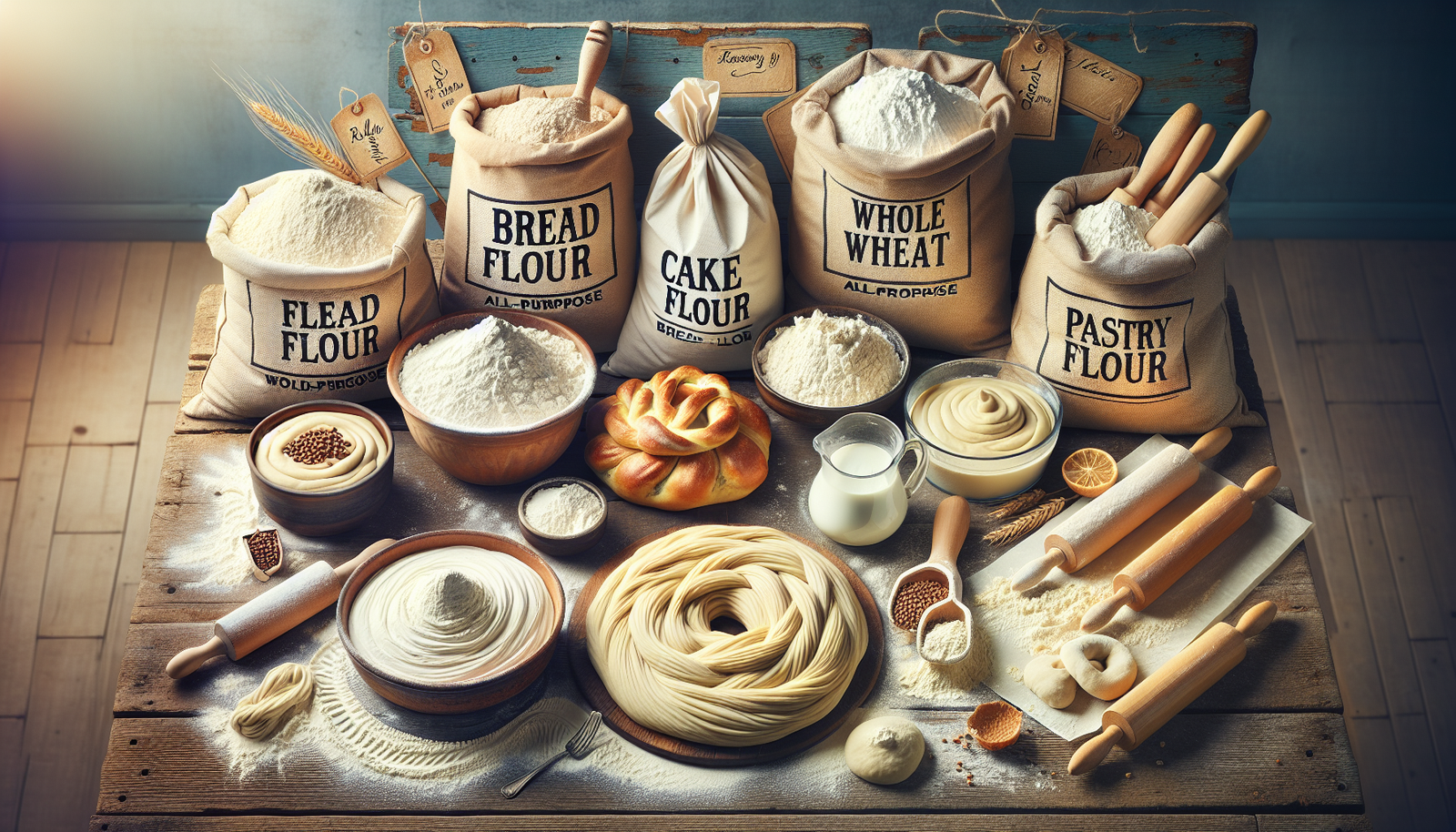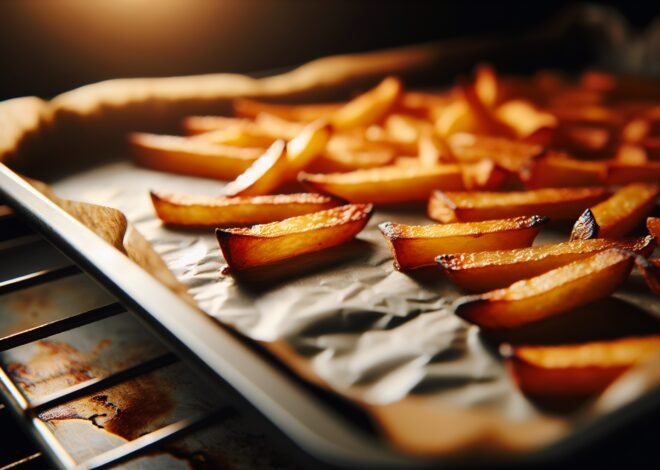
The Best Flour for Different Types of Dough
The best flour for dough can significantly impact the texture, flavor, and quality of your baking creations. Whether you’re crafting a perfect pizza crust, delicate pastry, or robust artisan bread, choosing the right flour can make all the difference. With gluten content, protein levels, and milling processes, the options can be overwhelming. Did you know that the protein content in flour dictates how your dough behaves? This guide will dive into the nuances of all-purpose, bread, pastry, and cake flours, helping you make informed decisions tailored to your baking needs. Discover how each flour type uniquely influences dough, ensuring your culinary endeavors are both successful and satisfying.
“`html
Understanding the Role of Flour in Dough Making
Flour is the foundation of all doughs, influencing texture, taste, and structure. Its role goes beyond being a mere ingredient; it determines how a dough behaves and responds during the baking process. Different types of flour bring unique characteristics to doughs, from their protein content to their gluten formation capabilities. This section explores how these variables affect dough making, offering insights into choosing the right flour for your baking needs.
How Protein Content Affects Dough Elasticity
Protein content is crucial in determining the elasticity and strength of dough. Flours with higher protein levels, such as bread flour, form more gluten when mixed with water. This gluten network gives dough its elasticity, allowing it to stretch and hold shape. Conversely, flours with lower protein content, like cake flour, produce a more tender and crumbly texture, making them ideal for delicate pastries where elasticity is less desirable.
In bread making, elasticity allows dough to trap gases produced by yeast, resulting in a chewy, airy crumb. For cookies or cakes, excessive elasticity can lead to tough textures, which is why lower-protein flours are preferred. Understanding the protein content of your flour can guide you in selecting the right type for your baking project, aligning the dough’s properties with your desired outcome.
The Importance of Gluten in Flour Selection
Gluten is a protein composite that forms when flour is mixed with water. Its development is critical in dough as it provides the strength and structure necessary for baked goods. The amount of gluten formed depends on the type of flour used. Bread flour, with its high protein content, develops a strong gluten network, perfect for bread and pizza crusts that require a chewy texture.
For those sensitive to gluten, selecting flours with lower gluten content or opting for gluten-free alternatives becomes essential. Understanding gluten’s role helps bakers make informed choices about flour selection, ensuring their baked goods meet both textural and dietary requirements.
Comparing All-Purpose Flour to Specialty Flours
All-purpose flour is a versatile choice, blending hard and soft wheat to strike a balance between strength and tenderness. It suits a wide range of recipes, from bread to cakes, but may not excel in specialized baking needs. Specialty flours, like cake flour or whole wheat flour, cater to specific baking outcomes.
Comparing these options involves assessing your baking goals. If you’re aiming for a tender cake, cake flour is preferable. Meanwhile, whole wheat flour offers a denser texture with nutritional benefits, ideal for hearty bread and muffins. Each type of flour brings unique qualities, allowing bakers to tailor their dough to the desired texture and flavor profile.
Best Flour for Bread Dough
Bread dough requires specific flour characteristics to achieve the perfect rise and texture. The choice of flour can make or break the outcome of your bread. This section delves into the best flour options for bread dough, helping you achieve bakery-quality results at home, whether you’re crafting a classic loaf or experimenting with whole grains.
Why Bread Flour is Ideal for Bread Dough
Bread flour is specifically designed for bread making, boasting a higher protein content than all-purpose flour. This high protein level leads to more gluten development, which is essential for the structure and elasticity of bread dough. The result is a chewy, airy crumb that characterizes a well-made bread.
Incorporating bread flour into your recipes not only enhances the texture but also improves the dough’s ability to rise. Its robust gluten network captures yeast gases effectively, leading to a superior rise and crumb structure. Choosing bread flour is an investment in quality, ensuring your bread has both the texture and flavor of artisan loaves.
Whole Wheat Flour in Bread Baking
Whole wheat flour adds a rich, nutty flavor and a denser texture to bread. It contains the entire wheat kernel, providing more fiber and nutrients compared to refined flours. However, its lower gluten content means whole wheat bread doughs may not rise as much as those made with bread flour.
To balance texture and nutrition, many bakers blend whole wheat flour with bread flour, combining the best of both worlds. This mixture results in a nutritious loaf with a satisfying chew and a slightly open crumb. Whole wheat flour in bread baking is a rewarding choice for those seeking depth in flavor and health benefits.
Sourdough Starter Flour Considerations
The choice of flour for a sourdough starter can impact its fermentation process and flavor. Rye flour is a popular choice due to its high nutrient content, which promotes active fermentation. It encourages the growth of beneficial bacteria and yeast, contributing to the sourdough’s distinctive tang.
Other flours like whole wheat or spelt can also be used, each imparting unique flavors to the starter. Consistency in flour choice helps maintain the starter’s characteristics over time. Experimenting with different flours can lead to discoveries that enhance the aroma and depth of your sourdough bread.
Choosing the Right Flour for Pastry Dough
Pastry dough demands precision and care, with flour playing a pivotal role in achieving the desired flakiness and tenderness. The right flour choice can elevate your pastries from ordinary to extraordinary. This section provides guidance on selecting the optimal flour for pastry dough, ensuring your creations are both delicate and delightful.
Low-Protein Flour for Tender Pastry Dough
Tender pastry dough benefits from low-protein flour, which limits gluten formation, resulting in a soft and flaky texture. Pastry flour, with its lower protein content, is a favored choice for pie crusts and tarts, where a delicate crumb is essential.
Substituting all-purpose flour with pastry flour can transform the texture of your pastries. The reduced gluten development prevents toughness, allowing layers to form easily when rolled, leading to a melt-in-your-mouth experience. Selecting low-protein flour is key to mastering the art of tender pastry dough.
Cake Flour Versus Pastry Flour for Pies
Cake flour and pastry flour are often interchanged in pie-making, but they serve distinct purposes. Cake flour is exceptionally soft, ideal for sponges and delicate cakes. However, its low protein content can make pie crusts too crumbly.
Pastry flour strikes a balance, offering enough structure to hold a pie together while maintaining flakiness. When choosing between the two, consider your desired pie texture. For a sturdy yet tender crust, pastry flour is preferable. Cake flour can still be used for ultra-tender results, but might require adjustments in handling.
Gluten-Free Flour Options for Pastries
For those adhering to gluten-free diets, numerous flour options can replicate traditional pastry textures. Almond flour, coconut flour, and rice flour are popular choices, each bringing unique flavors and textures.
Gluten-free baking often involves combining several flours to mimic the elasticity and structure of gluten. Xanthan gum or psyllium husk might be added to enhance binding. Experimenting with gluten-free flours opens up a world of possibilities, allowing you to enjoy pastries without gluten-related concerns.
“`
Conclusion
Bread flour is ideal for dough needing a strong gluten structure due to its high protein content. All-purpose flour is versatile, suitable for various doughs but may offer less elasticity compared to bread flour. Whole wheat flour provides a denser texture and nutty flavor, ideal for rustic breads. Pastry flour, with a lower protein content, is best for tender, flaky doughs like pastries and pie crusts. Gluten-free flours, made from grains like rice or almond, require alternative binding agents for structure.
“`html
FAQ
What type of flour is best for pizza dough?
Pizza dough benefits from strong flour like bread flour or high-gluten flour. These flours provide the elasticity needed to stretch the dough without tearing, resulting in a crispy crust with a chewy interior.
How does all-purpose flour differ from bread flour for dough making?
All-purpose flour has a lower protein content than bread flour. This results in a softer texture, making it suitable for lighter baked goods, but bread flour is preferable for recipes requiring a chewier texture, such as artisan breads.
Can gluten-free flour be used for making dough, and how does it affect the texture?
Gluten-free flour can be used, but it requires binding agents like xanthan gum for structure. The texture may differ, often turning out denser and less elastic than traditional flour-based doughs.
What is the role of protein content in choosing the best flour for dough?
Protein content directly affects the dough’s structure and elasticity. Higher protein flours create more robust gluten networks, enhancing chewiness and helping baked goods rise properly.
How does the type of flour impact flavor and crispiness in baked goods?
Flour type influences both flavor and texture. Whole wheat flour adds nuttiness, while high-gluten flour increases crispiness. Choosing the right flour elevates the overall taste and mouthfeel of baked items.
Which flour is recommended for achieving chewy and elastic bread dough?
Bread flour is ideal for chewy and elastic bread dough. Its higher protein content develops stronger gluten strands, providing the desired chew and elasticity found in artisan and sourdough breads.
“`











